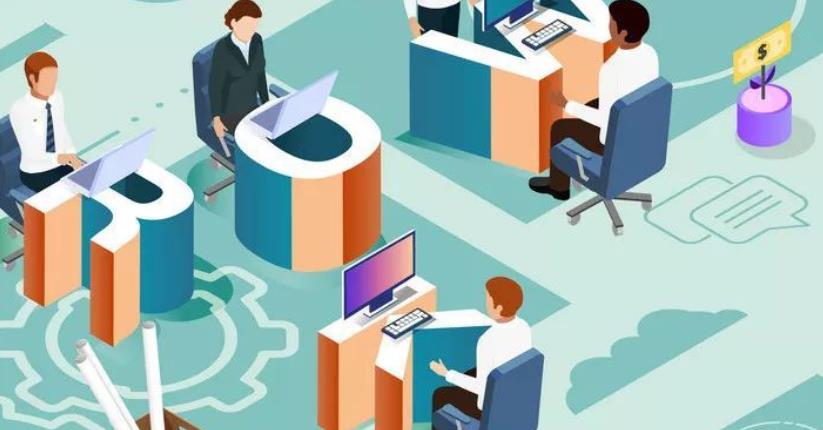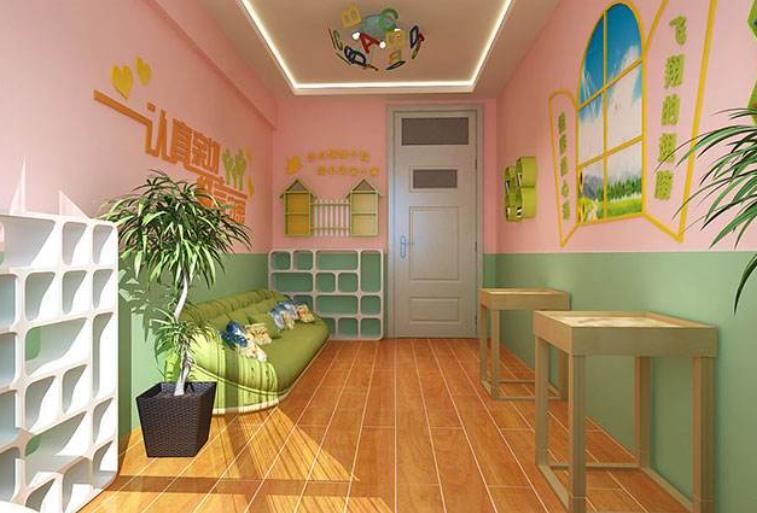|
本文是心理学专业的Essay范例,题目是“Role of Human Senses in the Spatial Experience of the City(人的感官在城市空间体验中的作用)”,建筑环境在我们的生活条件中起着至关重要的作用,影响着我们的决策、经历和记忆。我们的感官在帮助我们了解环境方面是必不可少的。我们用不止一种感觉来体验环境。 McGurk效应是多感官整合的一个显著例子,我们的大脑与我们的视觉和听觉结合在一起,创造我们对世界的有意识体验(McGurk & MacDonald, 1976)。我们所听到的往往是由我们所看到的决定的,同样地,听觉也会影响视觉。感官为引导和决定人类行为提供了国家依据,如图1所示。虽然关注每一种感官并理解每一种感官是如何构成我们与世界的接触是很重要的,但关注感官是如何相互作用也是很重要的。本文通过城市中感官行走的空间体验来探讨人的感官的作用,以及城市空间对那些缺少某些感官的人的意义。 The built environment plays a vital part in our living conditions, affecting the decisions we make, experiences and memories. Our senses are essential in helping us to understand the environment. We experience the environment with more than one sense at a time. The McGurk effect is an example of a striking demonstration of multisensory integration where our brain meshes with our vision and hearing in creating our conscious experience of the world (McGurk & MacDonald, 1976). What we hear is very often dictated by what we see and likewise, hearing can also affect vision. The senses provide national grounds in navigating and determining human behaviour, as shown in Figure 1. While it is important to focus on each of the senses and understand how each of them frames our access to the world, it is also essential to focus on how the senses interact. This paper examines the role of human senses through the spatial experience of sense walking in the city as well as the significance of the urban spaces especially for those who are missing some of their senses. OUR SENSES我们的感官 We perceive the urban spaces of the built environment as a result of the sensory experience of that particular space. Sensory experience is the input of the physical world obtained by our five senses while perception is the process of brain collection, organisation and interpretation of these sensory experiences (Pentz and Gerber, 2013). Information from these senses is processed and interpreted in the brain to form a three-dimensional image of the world we live in. “Our bodies and movements are in constant interaction with the environment, the world and the self-inform and redefine each other constantly” (Pallasmaa, 2012, 44). Interaction between the senses, body and the urban spaces help in gaining memories in places one has visited hence making the sensory experience a vital part of spatial perception. This also helps to strengthen the connection between the people, the public realm and space. When the eye collaborates with the other senses and the body, this interaction of the senses strengthens and articulates one’s sense of reality (Gibson, 1966). Each sense plays a significant role in transforming the architectural values and the design of urban spaces, shown in Figure 2. Our vision is capable of providing information in observing and investigating the spaces in the so-called far space, making it a very dominant and leading sense in our life causing the other four senses to become suppressed (Franck & Leopori, 2007, 20). The senses of touch, smell, taste, and hearing all require closer contact or actual involvement thus they are denied importance, as shown in Figure 3. 我们通过对特定空间的感官体验来感知建筑环境中的城市空间。感官体验是我们五种感官获得的物质世界的输入,而感知是大脑收集、组织和解释这些感官体验的过程(Pentz and Gerber, 2013)。来自这些感官的信息在大脑中被处理和解释,形成我们生活的世界的三维图像。“我们的身体和运动与环境、世界和自我意识不断互动,不断重新定义彼此”(Pallasmaa, 2012, 44)。感官、身体和城市空间之间的相互作用有助于人们获得曾经去过的地方的记忆,从而使感官体验成为空间感知的重要组成部分。这也有助于加强人、公共领域和空间之间的联系。当眼睛与其他感官和身体合作时,这种感觉的相互作用加强并阐明了一个人的现实感(Gibson, 1966)。每一种感觉在改变建筑价值和城市空间设计方面都扮演着重要的角色,如图2所示。我们的视觉能够提供信息来观察和调查所谓的远空间的空间,使其成为我们生活中非常主导和领先的感觉,使其他四种感觉被压抑(Franck & Leopori, 2007, 20)。触觉、嗅觉、味觉和听觉都需要更密切的接触或实际参与,因此它们的重要性被否定了,如图3所示
SPATIAL PERCEPTION空间知觉 Perception of space or spatial perception is the ability to be aware of our relationship between our body and the environment (Gibbs, 2006). As senses are constantly collecting information about the urban spaces, perception allows us to act within the space. Our five senses are always attracted to the stimuli that exist in the urban space. This includes the haptic system which is the change in the position of the body in relation to objects in the space or the movement of the arms or legs (Serina and Haggard, 2007). These represent the space stimuli and act as the beginning point for the perception process. As our attention is usually focused on a specific object in the urban space, that object will then form an image on the retina. An inverted image will be projected and converted into electrical signals to allow the transmission of visual messages to the brain. This cognitive ability will then allow us to perceive our surroundings with shapes, distances, and sizes making us aware of its presence in the space (Dijkerman, 2007). Our brain will then start moving to the recognition stage which helps us to recognise and respond to the world around us (Robinson & Pallasmaa, 2015). 空间知觉或空间知觉是一种意识到我们的身体和环境之间关系的能力(Gibbs, 2006)。随着感官不断收集城市空间的信息,感知让我们在空间中行动。我们的五种感官总是被城市空间中存在的刺激所吸引。这包括触觉系统,即身体在空间中与物体的位置变化或手臂或腿的运动(Serina和Haggard, 2007)。这些代表空间刺激,并作为感知过程的起点。由于我们的注意力通常集中在城市空间中的某个特定物体上,这个物体就会在视网膜上形成图像。一个倒置的图像将被投射并转换成电信号,以便将视觉信息传送到大脑。这种认知能力将允许我们感知周围的形状、距离和大小,使我们意识到它在空间中的存在(Dijkerman, 2007)。然后我们的大脑将开始进入识别阶段,帮助我们识别和回应我们周围的世界(Robinson & Pallasmaa, 2015)。 SENSE WALKS感觉行走 Sense walking is a method to explore and examine how we perceive and experience urban spaces which usually involves walking alone or with individuals through particular, mostly urban environments concentrating on one or more sensory environment or spaces (Adams and Askins, 2009, 42). Of those sense walks considered, the sense walks in this experiment includes walking alone and walking with individuals, implemented on a pre-determined route from Lincoln train station to Pavilions Student Accommodation carried out in silence and blindfolded to allow the participant to focus on olfactory and auditory information. The duration of the sense walks is between 25 and 30 minutes including stopping points in different types of spaces such as the train station, university area, busy roads and housing area, shown in Figure 4. At each of these stopping points, anything that is observed and detected by the senses are recorded. 感觉步行是一种探索和检验我们如何感知和体验城市空间的方法,通常涉及到独自或与个人一起走过特定的,主要是城市环境,专注于一个或多个感觉环境或空间(Adams and Askins, 2009, 42)。在这些感官行走中,实验中的感官行走包括单独行走和与他人一起行走,在从林肯火车站到学生宿舍的预先确定的路线上进行,在安静的环境中进行,蒙住眼睛,让参与者专注于嗅觉和听觉信息。感官步行的持续时间在25 - 30分钟之间,包括不同类型的空间,如火车站、大学区、繁忙的道路和住房区,如图4所示。在每一个停止点,任何被感官观察和检测到的东西都会被记录下来。 Based on the sense walk with all of the senses being present, the spaces are perceived based on the sensory systems, context and memories. These systems have different ranges for exploring urban spaces. Sense of sight and sense of hearing can receive information over a greater range. (Wankhede and Wahurwargh,2017). For instance, while doing the sense walk, different types of spaces and sound can be identified and heard from far away, for example, the shops along the High Street, the restaurants along the Brayford Pool, the University Library, the sound coming from the trains, cars and people as shown in Figure 5 and Figure 6. Hearing is an incorporating sense to the sense of sight. Thus, the experience while walking along the journey, the meaning of the level crossing bell, the noise from the people, the various approaches of the soundscape provides the sense walk a three-dimensional atmosphere. “We are not aware of the importance of hearing in spatial experience, although sound often provides the temporal continuum during which visual impressions are embedded” (Pallasmaa, 2012, 53). 在感官行走的基础上,通过感官系统、语境和记忆对空间进行感知。这些系统有不同的探索城市空间的范围。视觉和听觉可以接受更大范围的信息。(Wankhede Wahurwargh, 2017)。例如,做走,不同类型的空间和可以识别和听到声音从很远的地方,例如,沿着高街商店,餐馆Brayford池,大学图书馆,声音来自火车,汽车和人如图5和图6所示。听觉是视觉与听觉的结合。因此,行走途中的体验、关卡钟声的意义、来自人群的噪音、各种方式的音景为行走的感觉提供了一种三维的氛围。“我们没有意识到听觉在空间体验中的重要性,尽管声音通常提供了视觉印象嵌入的时间连续体”(Pallasmaa, 2012, 53)。 Since the sense of sight is too powerful, it is hard for the other senses to immediately come into action. The sense of touch, smell and taste would only be beneficial if we come nearer to the objects or spaces. For instance, the scent helps in stimulating emotions and capturing one’s memory of a certain place. Likewise, since every city has its smell, every urban space could have the same. Since the eye is the distance organ where it observes and investigates, touch is the sense of closeness to which we approach and feels. When light makes space for shadow our other senses are sharpened including the sensitivity to touch. The sense of touch is the tool in providing texture, density, weight and temperature. The skin helps in detecting the temperature along the journey and the foot measures the texture and density of the pavement, shown in Figure 7 (Hadjiphilippou, 2013). 由于视觉的力量太强大,其他感官很难立即发挥作用。触觉、嗅觉和味觉只有在我们靠近物体或空间时才会有益。例如,气味有助于刺激情绪和捕捉一个人对某个地方的记忆。同样地,既然每个城市都有自己的味道,那么每个城市空间也可以有同样的味道。由于眼睛是观察和调查的距离器官,触觉是我们接近和感觉的近的感觉。当光为阴影创造空间时,我们的其他感官就会变得敏锐,包括触觉的敏感度。触觉是提供质地、密度、重量和温度的工具。皮肤可以帮助检测沿途的温度,而脚可以测量路面的纹理和密度,如图7所示(Hadjiphilippou, 2013)。 The sense walks while being blindfolded provides a completely new perspective in perceiving the spaces although the route is completely the same. As the ability to have proper mobility has lost very quickly, the thought of bumping into objects or people are there but those feelings go away over time. “It is not simply that the world becomes unreal when one is not able to see it any longer; one’s own body becomes unreal because it is no longer plunged into a familiar world” (Hull, 1997, 181). Once I get used to my body along with the guide, the guide itself becomes an extension of the body instead of a simple object. As the sense of sight is completely removed in this experiment, sense of touch become the most used and important sense. Tactile impression become prominent for a non-sighted person, as shown in Figure 8. For instance, the railings on the steps going to the Arts Bridge plays play a vital role when climbing the stairs and also the types of textures on the ground. The smell is additionally an essential sense in capturing and understanding the idea of the space, shown in Figure 8. With respect to smell in the form of food products such as those sold in the café, and those of cooking food, whether being cooked, sold or eaten helps in indicating the food court area in the Minerva Building. As I am completely focused, the sense of hearing also becomes more prominent. Sound coming from cars and people seems a lot closer and clearer than usual. Similarly, sounds of nature such as wind and birdsong are also present, as shown in Figure 9. Comparing to smell, the sense of taste is less obvious. This is because the taste action needs support from the sense of touch.
OLAFUR ELLIASON’S IN REAL LIFE EXHIBITION奥拉维尔·埃利亚森在现实生活中的展览 ‘Din Blinde Passager’, which translates as ‘your blind passenger’ is an approximate 39 metres tunnel which uses varieties of fluorescent lamps, yellow mono frequency lamps and fog machines to limit the visual perceptions of the visitors as they move through the long narrow passageway. The densely fogged surroundings solely present visibility at about 1.5 metres forcing the visitors to use senses other than sight in navigating and orienting themselves in relation to their surroundings, figure 10. Usually, these changes are so gradual and normal in our environment that we hardly notice them, but Eliasson’s piece condenses an entire day to a special, intense experience on how we perceive the world around us. With the distractions of our surroundings eliminated, having limited visibility in a confined space, we experience the light in a way we have never before. After all, we realise that we are not completely blind as the other four senses play their respective roles and start kicking in. This indicates that the relativity of our senses is higher than we think. We are actually able to recalibrate it or at least stop being numb. “Din Blinde Passager”,翻译过来就是“你的盲人乘客”,是一个大约39米长的隧道,使用各种各样的荧光灯、黄色单频灯和雾机来限制游客的视觉感知,当他们通过狭长的通道。浓雾笼罩的环境仅在1.5米处呈现能见度,迫使游客使用视觉以外的感官来导航和定位自己与周围环境的关系,图10。通常,在我们的环境中,这些变化是如此的缓慢和正常,以至于我们几乎注意不到它们,但埃利亚松的作品将一整天浓缩为一种特殊的、强烈的体验,我们如何感知周围的世界。消除了周围环境的干扰,在一个有限的空间中,我们的能见度有限,我们以一种前所未有的方式体验光。毕竟,我们意识到我们并不是完全失明,因为其他四种感官发挥着各自的作用并开始发挥作用。这表明我们感官的相对性比我们想象的要高。我们实际上能够重新校准它,或者至少不再麻木。 CONCLUSION结论 The sense walks and ‘Din Blinde Passager’ experiment does not replicate the experience of a deaf or a blind person. However, these two experiments provideuseful insight into non-visual aspects of the urban spaces and also how people use their senses to perceive the surrounding environment. Although sight still prevails as the dominant sense, through these experiments, sight seems to go as far as the surface context, but it has little connection to user-specific experiences and expectations. Hence, the other four senses play their respective roles and work together in stimulating and enabling access experiences and memories, thus resulting perceptions of those areas. In the built environment context, urban spaces and architectural design more often responds to only the visual sense. Planning and construction of the built environment without taking into consideration their multi-sensoriality and accessibility will only result in blurred spaces. In addition to the functional demands, architectural design should focus on how people feel inside the building and how they will perceive the environment. Not only on how the space looks, but also how it touches, feels, sounds and perhaps even tastes. For the occupant to have a deeper, more meaningful interactions and experiences in the built environment, form and function need to be articulated more thoroughly by engaging all of the senses. As the human body moves and undergoes sensory experiences, only then the architecture comes to life. 感官行走和“Din Blinde Passager”实验并不能复制一个聋哑人或盲人的体验。然而,这两个实验为研究城市空间的非视觉方面以及人们如何利用感官感知周围环境提供了有用的见解。虽然视觉仍然占据主导地位,但通过这些实验,视觉似乎已经超越了表面语境,但它与用户特定的体验和期望几乎没有联系。因此,其他四种感官发挥各自的作用,共同刺激和使能体验和记忆,从而产生对这些区域的感知。在建筑环境语境下,城市空间和建筑设计往往只对视觉做出反应。建筑环境的规划和建设如果不考虑其多感官性和可达性,只会导致空间的模糊。除了功能性的需求,建筑设计应该关注人们在建筑内部的感受以及他们如何感知环境。不仅是空间的外观,还有它的触摸、感觉、声音甚至味道。为了让居住者在建筑环境中有更深刻、更有意义的互动和体验,需要通过参与所有感官来更彻底地表达形式和功能。当人体运动并经历感官体验时,建筑才有了生命。 留学生论文相关专业范文素材资料,尽在本网,可以随时查阅参考。本站也提供多国留学生课程作业写作指导服务,如有需要可咨询本平台。 |
 |
|||
| 网站地图 |



